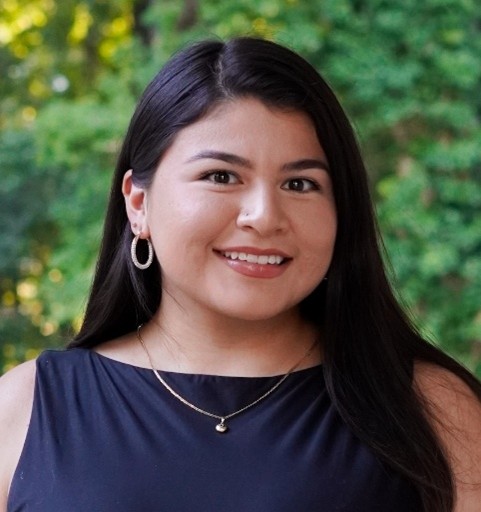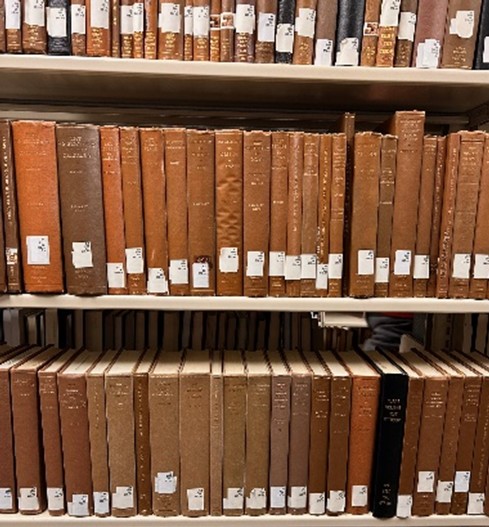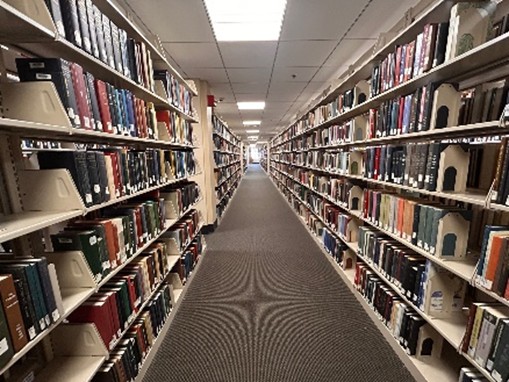
The Collection Strategy & Development (CSD) department of the Collection Services division is pleased to introduce a new collection diversity analysis practicum project and our first practicum student on this project.
Melina Flores joins us from UNC SILS where she is in her final year of the 4+1 Dual Degree program. Flores has earned a Bachelor of Science in Information Science and will graduate with a Master of Science in Information Science in the Data Science and Data Analytics Concentration in August. Flores has an impressive resume that showcases her database work at the UNC University Development Office, and policy, leadership, and outreach experience through fellowships with the Parr Center for Ethics at UNC, and the Líder Fellowship with Carolina Leadership Institute and appointments to the UNC Graduate and Professional Student Government (GPSG), and the UNC SILS chapter of the Special Libraries Association (SLA).

The Collection Diversity Analysis Practicum Project is an exploration of the diversity of materials in the academic library collection through data analysis. Students working on the project will select a scoped subset of the collection to analyze in depth to see how our collection compares to the universe of available and relevant resources in that subject area.
One of our goals in CSD is to build a library collection of diverse resources that contains a multitude of perspectives. This is not a new concept in academic library collection development. Academic libraries in the United States began collecting comprehensively in the 1870’s when priorities in higher education shifted from delivery of a classical education to the production of research. Under the classical education model, students were expected to read only assigned texts, and libraries provided those texts. The change in the academic model required that students and faculty have access to a wide range of resources in order to engage in independent research and study. Libraries shifted to purposefully build comprehensive collections to satisfy these priorities. (Jones Jr., 1989; Weiner, 2005) Practices and perspectives about how to define this wide range of resources continue to evolve.
 Assessment of diversity in library collections has a history dating to around the mid 1990’s when diversity was thought of as multiculturalism and coalesced around race, ethnicity, and gender. Definitions of diversity in the library collection continued to expand to include other markers like sexuality, socioeconomic status, and ability status. (Ciszek & Young, 2010) Diversity in the library collection is a complicated moving target to quantify across the broad range of library types, subjects, and formats.
Assessment of diversity in library collections has a history dating to around the mid 1990’s when diversity was thought of as multiculturalism and coalesced around race, ethnicity, and gender. Definitions of diversity in the library collection continued to expand to include other markers like sexuality, socioeconomic status, and ability status. (Ciszek & Young, 2010) Diversity in the library collection is a complicated moving target to quantify across the broad range of library types, subjects, and formats.
We aim for diversity in authorship, subject matter, perspective, source, and format. We consider all markers above and also the intersection of identities, perspectives, and formats (and keep our minds open to other markers we may discover as we work through the collection). Our working definition of diversity will change based on the scope, subject area, and institutional focus, including which markers to assess for, and how they are expressed in a work. Markers of diversity in a children’s picture book collection are different than those for an academic library mathematics collection.
Even across peer research libraries we can’t evaluate diversity on the same rubric because we all collect according to the research and teaching interests of our respective universities. We create a diverse network of collections by collecting deeply in our priority areas and then sharing those collections with other libraries through inter-library loan (ILL). In addition to these institutional foci, we each broadly collect works that tell many sides of the story, include many voices, and present many perspectives to students, faculty, and researchers.
 We want to measure what matters, and this project explores ways to measure diversity in the library catalog given the above limitations and other complications like time, budget, publishing context, and metadata. A large-scale diversity audit of the whole collection is challenging because each subject area will have different metrics, context, and metadata. This project seeks to conduct smaller, deeper audits of tightly scoped parts of the collection.
We want to measure what matters, and this project explores ways to measure diversity in the library catalog given the above limitations and other complications like time, budget, publishing context, and metadata. A large-scale diversity audit of the whole collection is challenging because each subject area will have different metrics, context, and metadata. This project seeks to conduct smaller, deeper audits of tightly scoped parts of the collection.
There are three components to the project:
- Research: Extensive review of the literature and past work on library collection diversity in general and on diversity in the context of the scoped section, including how peer libraries collect and the publishing context.
- Assessment: Conduct an in-depth assessment of that section and compare that to the research of what a diverse collection in that section could look like.
- Recommendations: Make recommendations of what needs to be done to get there, and share the results of the project in some way – a report, presentation, poster, video, blog post, etc.
As with any data analysis project, actually analyzing data is only part of the work. Understanding the context and figuring out what questions to ask and how involves substantial background research and asking a lot of people a lot of questions. Flores will take a deep dive into current work in her chosen section, to include interviewing faculty and library staff, reviewing syllabi and publications, and researching collections of other libraries. Flores will also learn some basic project management skills, conduct data description and analysis, make actionable recommendations, and share the work with the library community. We hope that this project is the first of many.
Ciszek, M. P., & Young, C. L. (2010). Diversity collection assessment in large academic libraries. Collection Building, 29(4), 154-161. https://doi.org/https://doi.org/10.1108/01604951011088899
Copilot. (2025). Data and academic libraries [Image]. Generated by Microsoft Copilot.
Jones Jr., P. A. (1989). The history and development of libraries in American higher education. 1989(7), 4. https://doi.org/10.5860/crln.50.7.561
Weiner, S. G. (2005). The history of academic libraries in the United States: a review of the literature. Library Philosophy and Practice, 7(2), NA-NA.

